Tag: Gardening with Natives
-
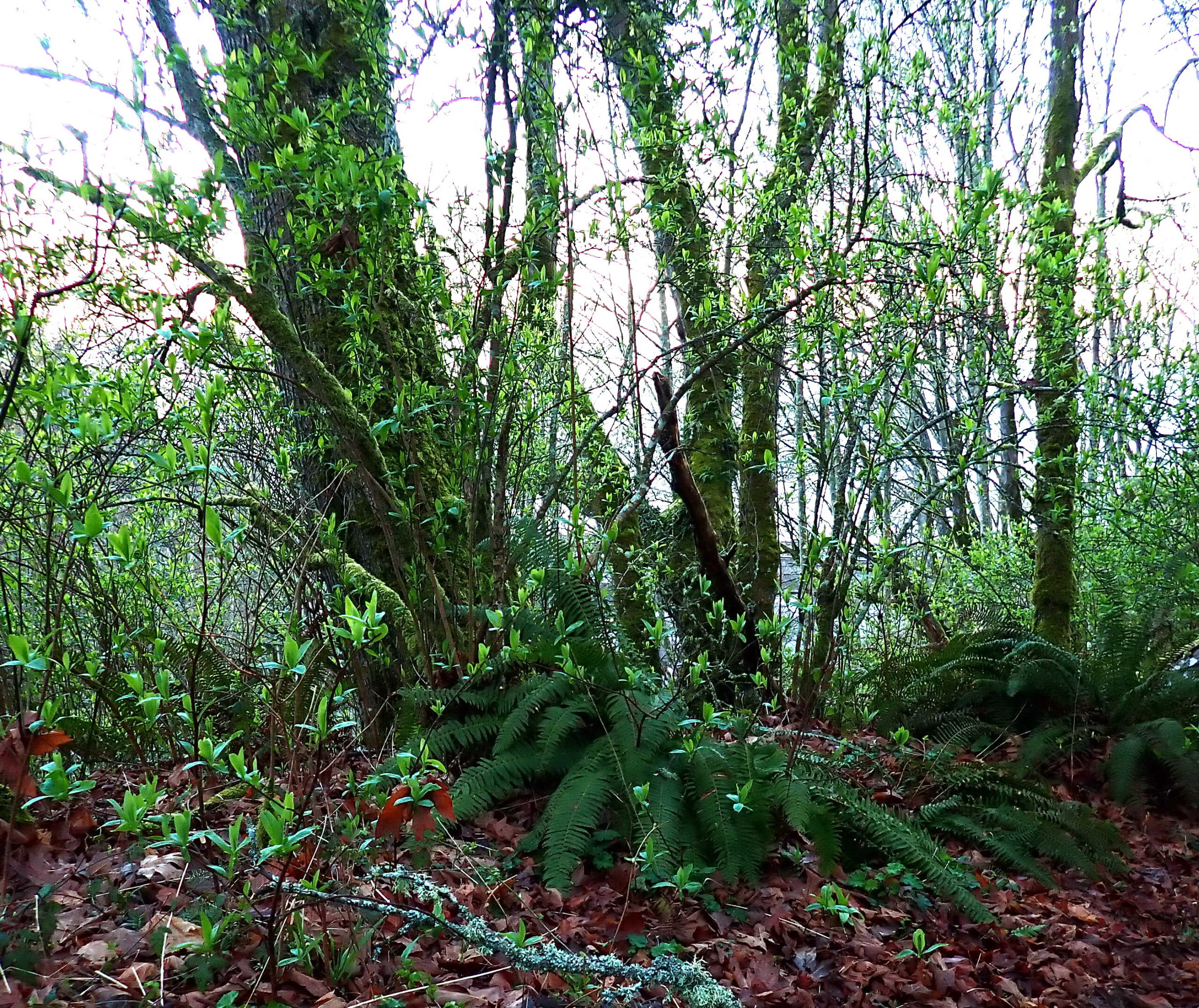
Backyard Forest Restoration Anticipation
Our forests are moving and changing. Perhaps backyard forest “restoration” should be renamed backyard forest “anticipation.”
-
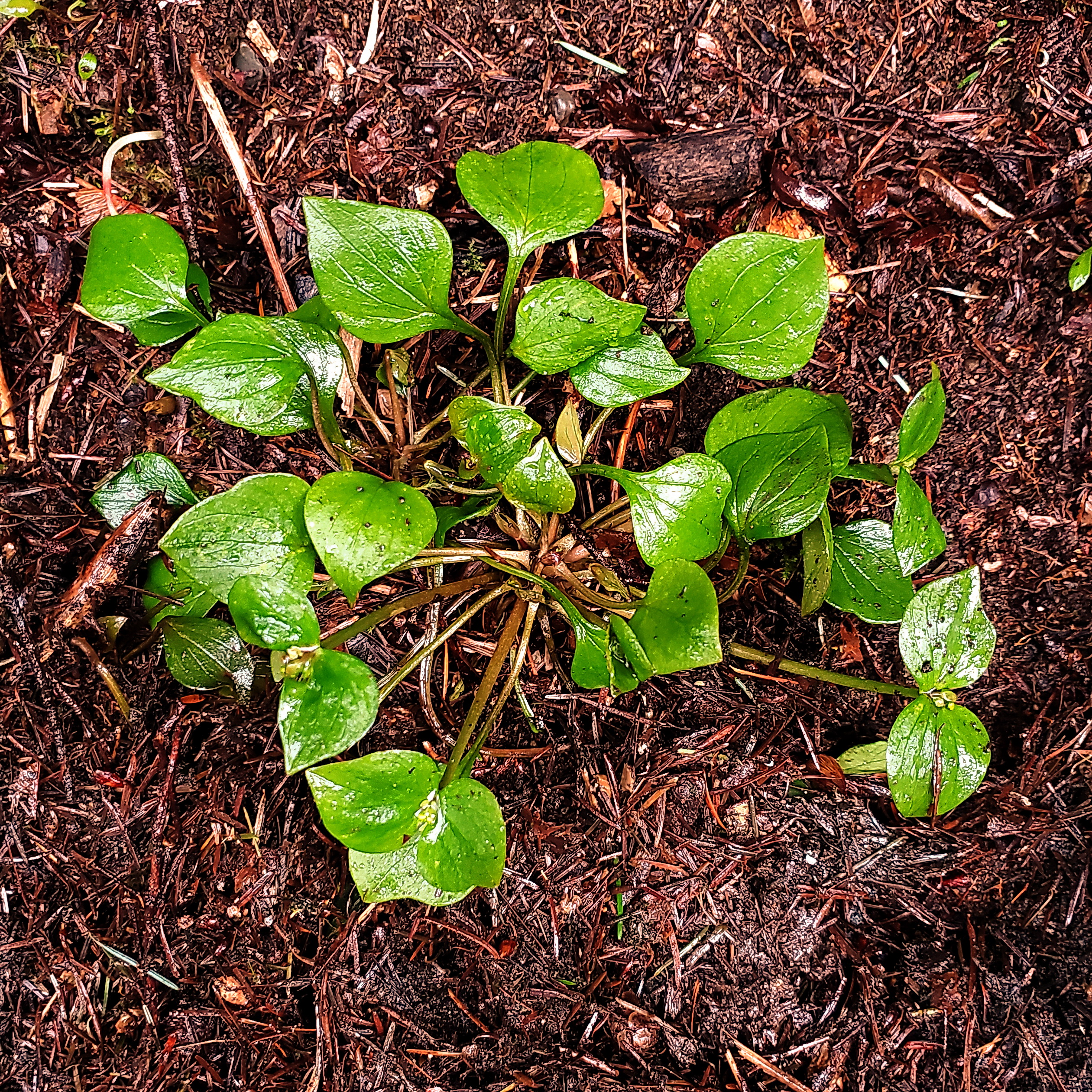
Does Sheet Mulching Deter the Natural Regeneration of Native Groundcovers?
Does sheet mulching with wood chips deter the natural regeneration of native groundcovers?
-
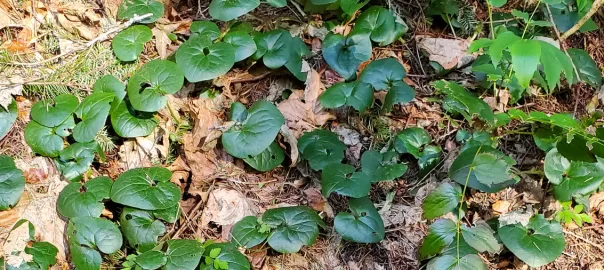
Establishing Groundcover
Ideally, backyard forest restoration results in “working ourselves out of our jobs,” or at least significantly reducing our annual maintenance needs. Establishing robust native groundcovers helps achieve this by deterring unwanted plants. Native groundcovers may regenerate naturally over time, but we can assist by installing plants in gaps. Though we can get most of these…
-

Removing or Allowing Plant Siblings
As we weed our backyard forests and their edges, we are constantly making decisions about which plants to remove and which to allow. For some plant species those decisions are complicated by various factors, and different restoration practitioners may have different, legitimate opinions.
-
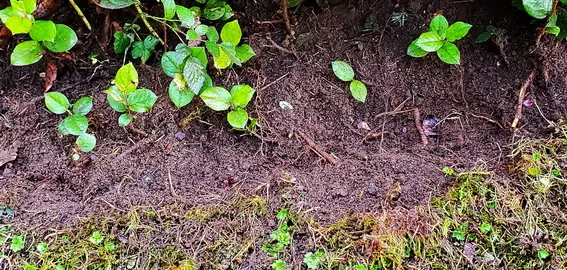
The Bradley Sisters and the English Perennial Garden
Being Australians from Sydney, and very “British,” the two Bradley sisters were certainly familiar with English-style perennial gardens and likely had experience maintaining them. Recently, I realized that their well-known method of bushland restoration, the Bradley Method, could have evolved directly from their experience with preventing grass from invading flower beds.
-
Preparations for an October Tree Planting
This blog describes on-site work to prepare for an October tree planting event.
-
Marking Future Transplants During the Dry Season
The dry season is a good time to look for sapling trees, shrubs, and small forbs growing in weedy areas or in spots too close to trails and marking them to transplant later when the wet season returns.
-
Weeding – The Essence of Backyard Forest Restoration
Recently, bending over to remove an Herb Robert from a patch of Bleeding Heart, it occurred to me that hand weeding is the very essence of backyard forest restoration — at least for idealists like myself who are trying to achieve ground covers and shrub layers comprised almost solely of native plants. Weeding can be…
-
The Useful Garden Fork
The garden fork is a useful tool for loosening soil prior to removing invasive plants and for planting natives.
-
Two Easy Wet-Season Transplants
Large-Leaved Avens and Fragrant Fringecup are evergreen, perennial forbs native to the Puget Lowlands. I’ve had good success “rescuing” and transplanting both during the wet season without irrigation.
-
Mycorrhizal Applications for Backyard Forest Restoration
Lately I have been considering the purchase of a mycorrhizal fungi inoculant to mix into the soil with my Fall/Winter tree plantings.
-
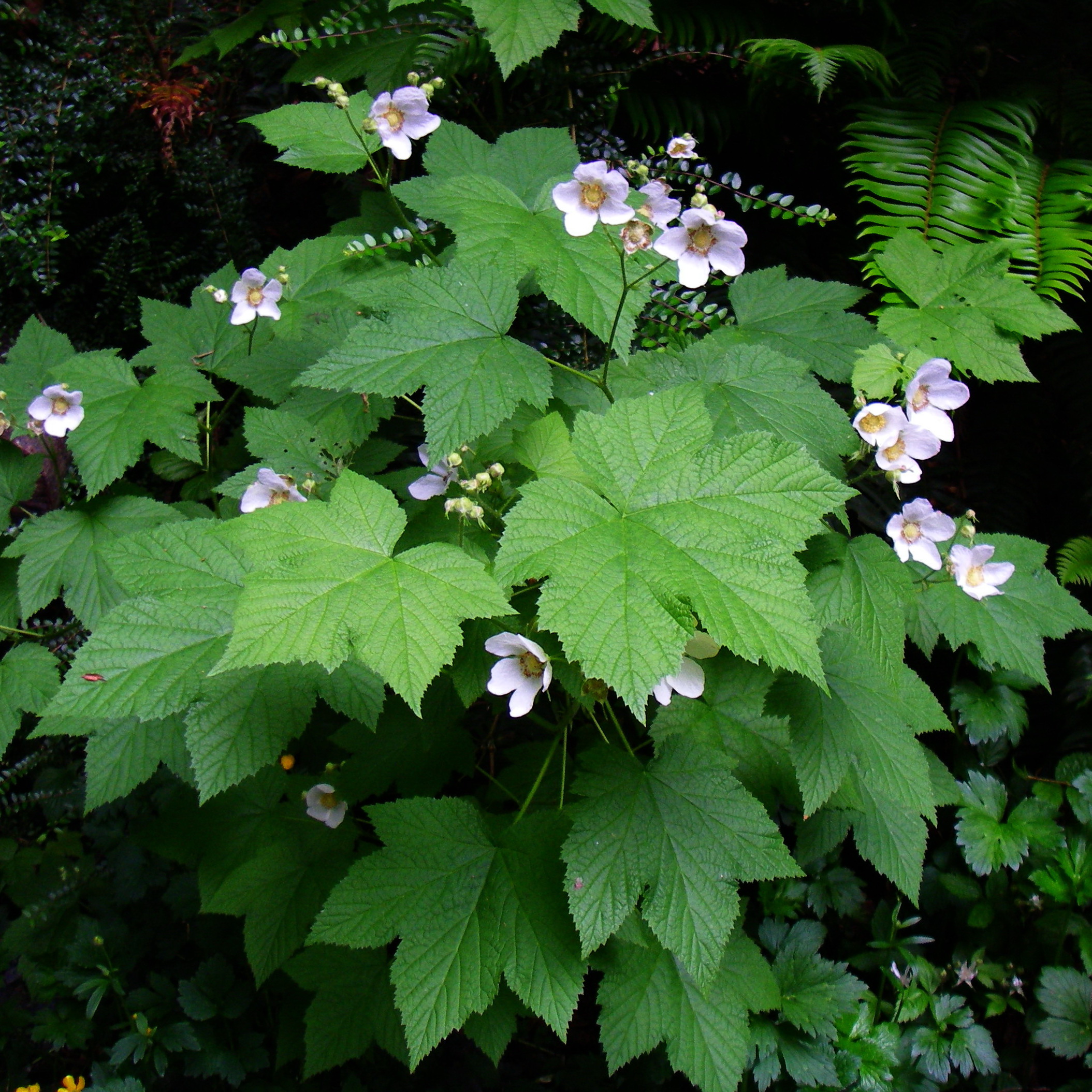
Gardening with Native Plants
In addition to the removal of invasive plants, forest restoration involves efforts to regenerate native plants.
-

Glad to have “Mudded In”
I’ve spent the last few mornings watering plants in the midst of this all-time record heatwave in our region. When I planted these trees, shrubs, and ferns back in March and April, I took the extra time and effort to mud them in and, where possible, create basins around them to hold water. I’m glad…
-
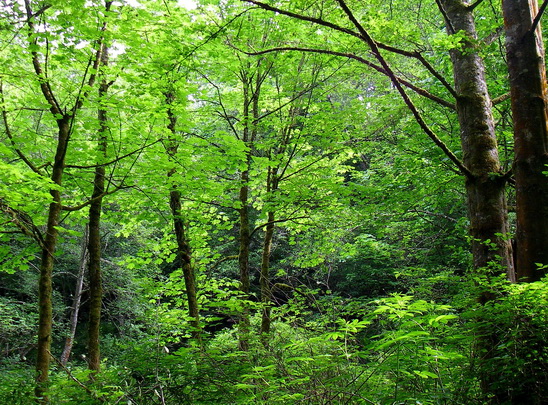
An Activity to Celebrate the Summer Solstice
I’m thinking of a nice outdoor activity to celebrate tomorrow’s summer solstice — deciding on the trees I’m going to plant in late Fall.
-
Choosing the Right Trees to Plant in Our Urban Forests
We have opportunities to plant many trees in our urban forests, but what species should we choose?
-
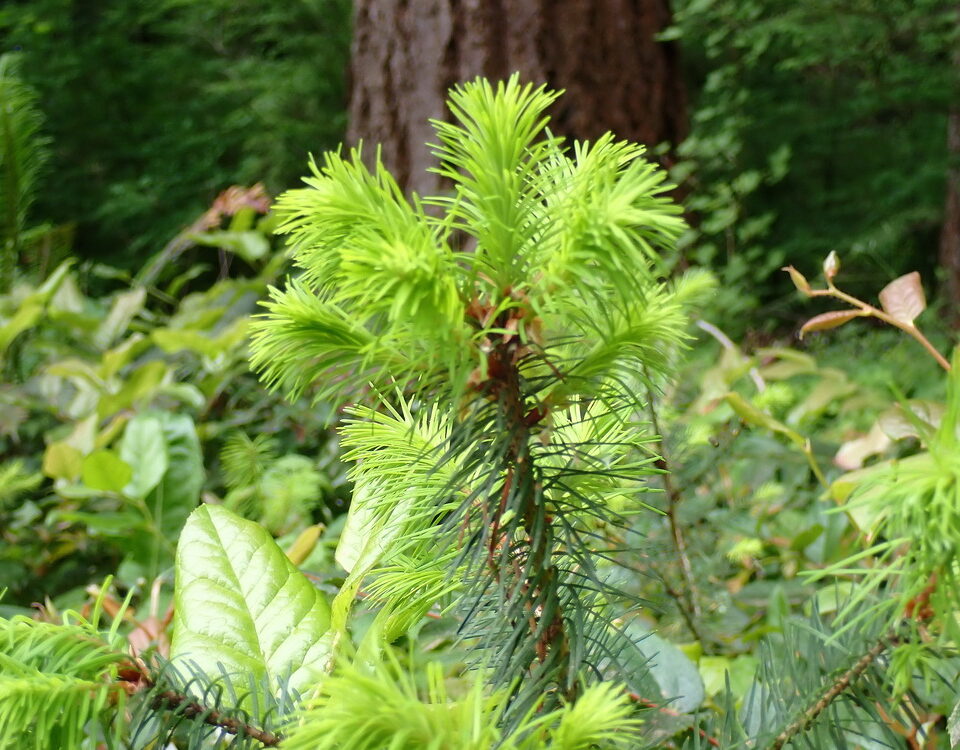
Volunteer Douglas Firs
The other day, I was surprised and delighted to find a half-dozen volunteer Douglas Fir seedlings in a spot that might actually get enough sunlight to support them.
-
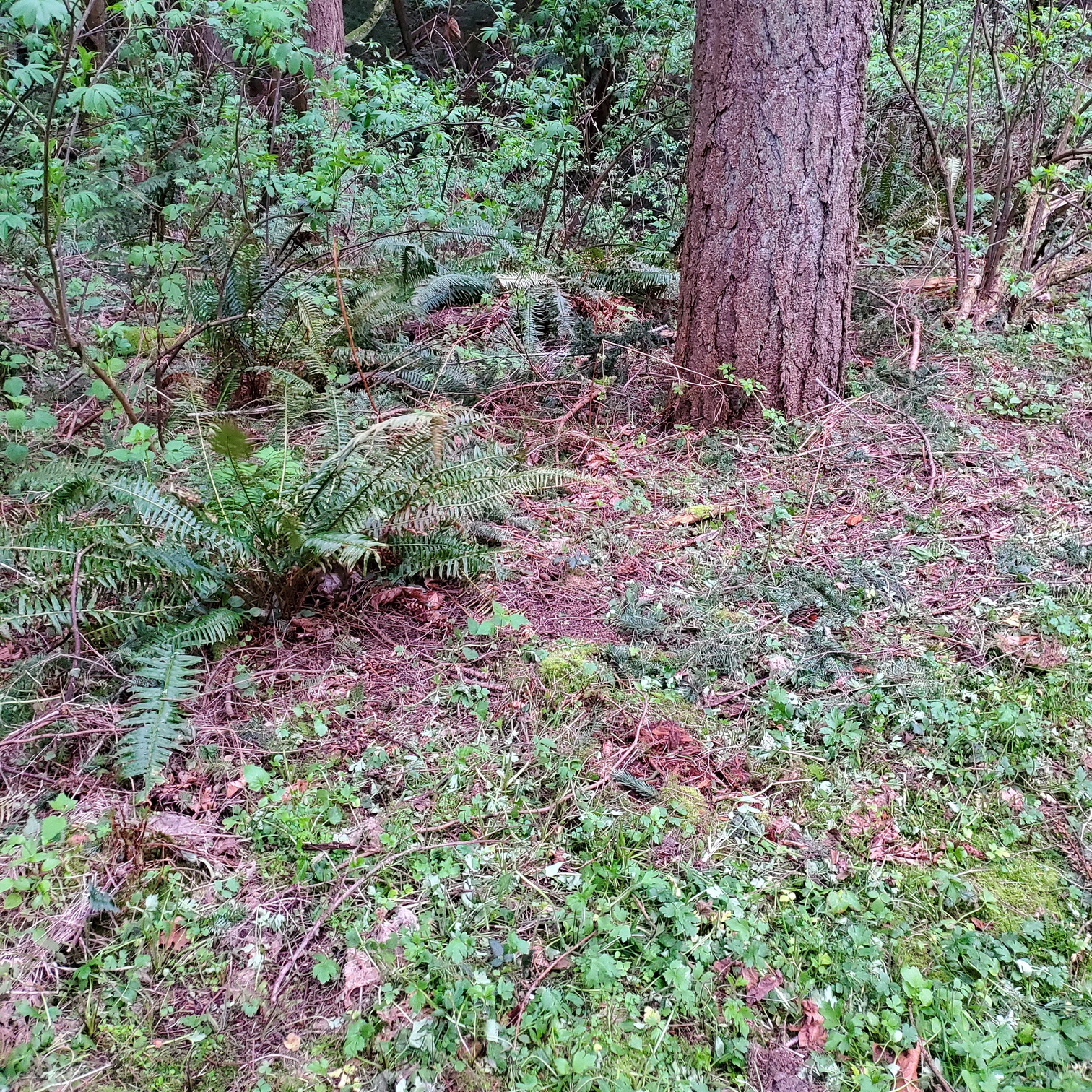
Forest Edges — Problems and Possibilities
Since the edges of the forest are often sunny, they provide the opportunity to grow a large diversity of native plants, but weeds can be a problem.
-
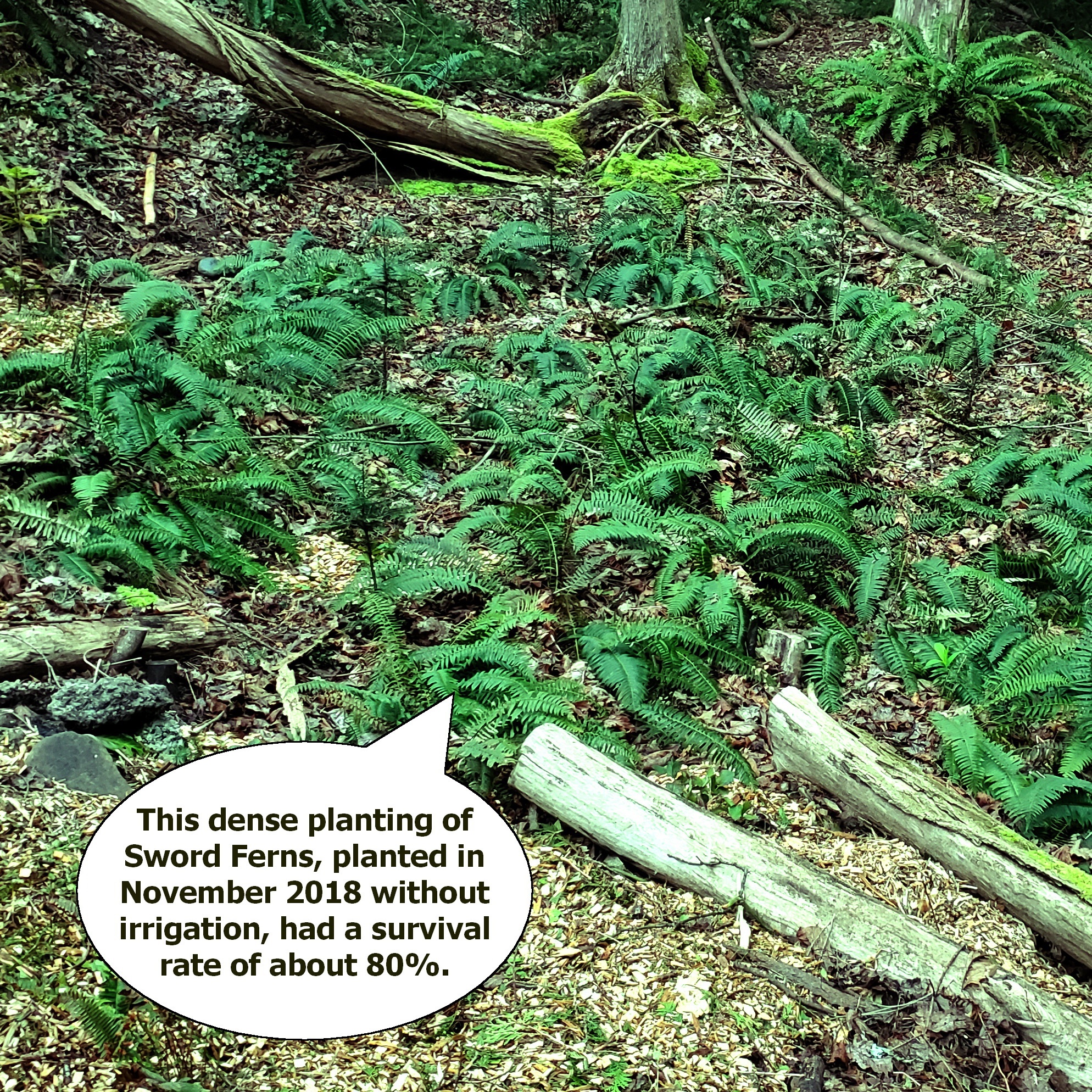
The Sobering Cost of High-Density Planting
Using the spacing guidelines from the Green Seattle Partnership and current retail prices from a local native plant nursery I estimate that installing a dense planting of natives on a site measuring only 10’ by 10’ (100 square feet) would cost about $470.
-
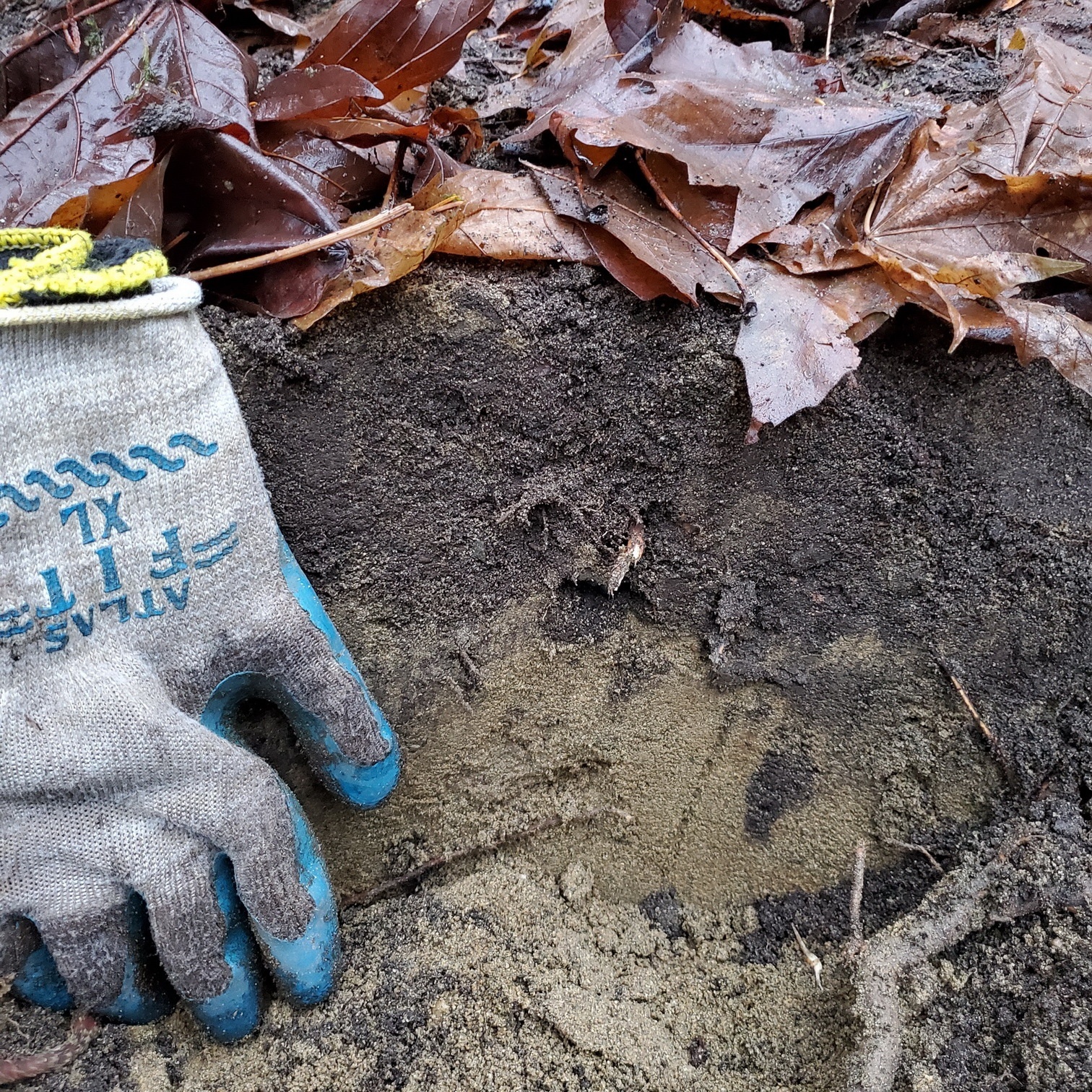
Done Well, Forest Restoration Includes Caring for the Soil
The rate of topsoil formation in our region is painfully slow – less than 1” every 2,000 years. Only 7” has accumulated (at most) since the last glacier retreated 15,000 years ago.
-

Multiplication by Division in our Backyard Forests
March is here, the best time to start multiplying and dividing in earnest – multiplying some of the native plants we already have growing in our backyard forests, using a plant propagation method known as division.